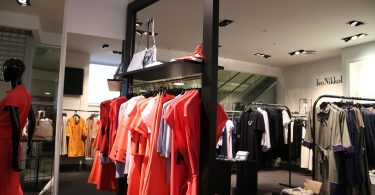Tate Modern is currently hosting “The Modern Eye”, a collection of paintings, photographs, and even a film by Norwegian expressionist artist Edvard Munch.
Tate Modern is currently hosting “The Modern Eye”, a collection of paintings, photographs, and even a film by Norwegian expressionist artist Edvard Munch. Tickets cost significantly less that the price tag of his classic work The Scream, which sold for £74 million at an auction in May, and the exhibition offers an incredible insight into the artist’s life and personality.
“The Modern Eye” has given Munch fans the chance to see the man as more than the ‘shock and awe’ creator of The Scream. In fact, the variety of media present at Tate creates a certain closeness between the visitor and Munch, and feels more like opening the doors to your grandfather’s attic where old keepsakes are kept rather than a grandiose art gallery.
At the same auction in May, Munch’s other works didn’t do nearly as well as The Scream. They sold “ for less than their low estimates and in one case, not at all”, as David Gardner wrote for The Standard back in May. Tate gives us the opportunity to look past The Scream and appreciate Munch as an artist with many interests, among them photography.
Munch was a passionate photographer, and found the camera to be a new way to keep a record of his life and work. He experimented with various effects, and a third of his known photos are actually self-portraits. Later on, Munch became a big fan of taking photographs of himself with the camera at arm’s length, a technique we are all so familiar with nowadays thanks to smartphones. Tate’s Simon Bolitho writes in the accompanying notes: “It is possible that he saw this technique as literally bringing the intuitive hand of the artist into the process of photographic portraiture.” Something to keep in mind next time you use Instagram.
But Munch’s fascination with self-portraits and effects isn’t the only thing that makes this exhibition hit so close to home. In Room 11 of “The Modern Eye”, we find the expression of a real human fear, a fear we can name and even find in ourselves: losing our ability to see. The room titled “The Averted Eye” hosts a series of paintings and drawings documenting Munch’s experience with an eye hemorrhage in 1930. He was unable to work for a few months, but his eyesight eventually recovered.
Munch was interested in this phenomenon from a scientific point of view, and began keeping records of what he could see and what effect the hemorrhage had on his vision. According to Bolitho, “he understood that the damage to his eye had enabled him to experience new visual sensations that would not otherwise have been available to him.”
The exhibition shows us that Munch, whilst having an incredible “Modern Eye”, also had a very human one. The Scream may hold its very popular charm in its mystery and awe-inducing expressivity, but Munch’s other paintings, woodcuts or photos are striking in a slightly different way. The paintings are surprisingly easy to identify with. I was told I needed an audio-guide to fully enjoy the exhibition, but I left wondering if I would have appreciated it all the same without the detailed explanations. Love, loss, the joy of returning home, fear and experimentation are human characteristics which transcend any medium, and are instantly recognisable.
“Edvard Munch: The Modern Eye” is at Tate Modern until October 14, tickets cost £14.








